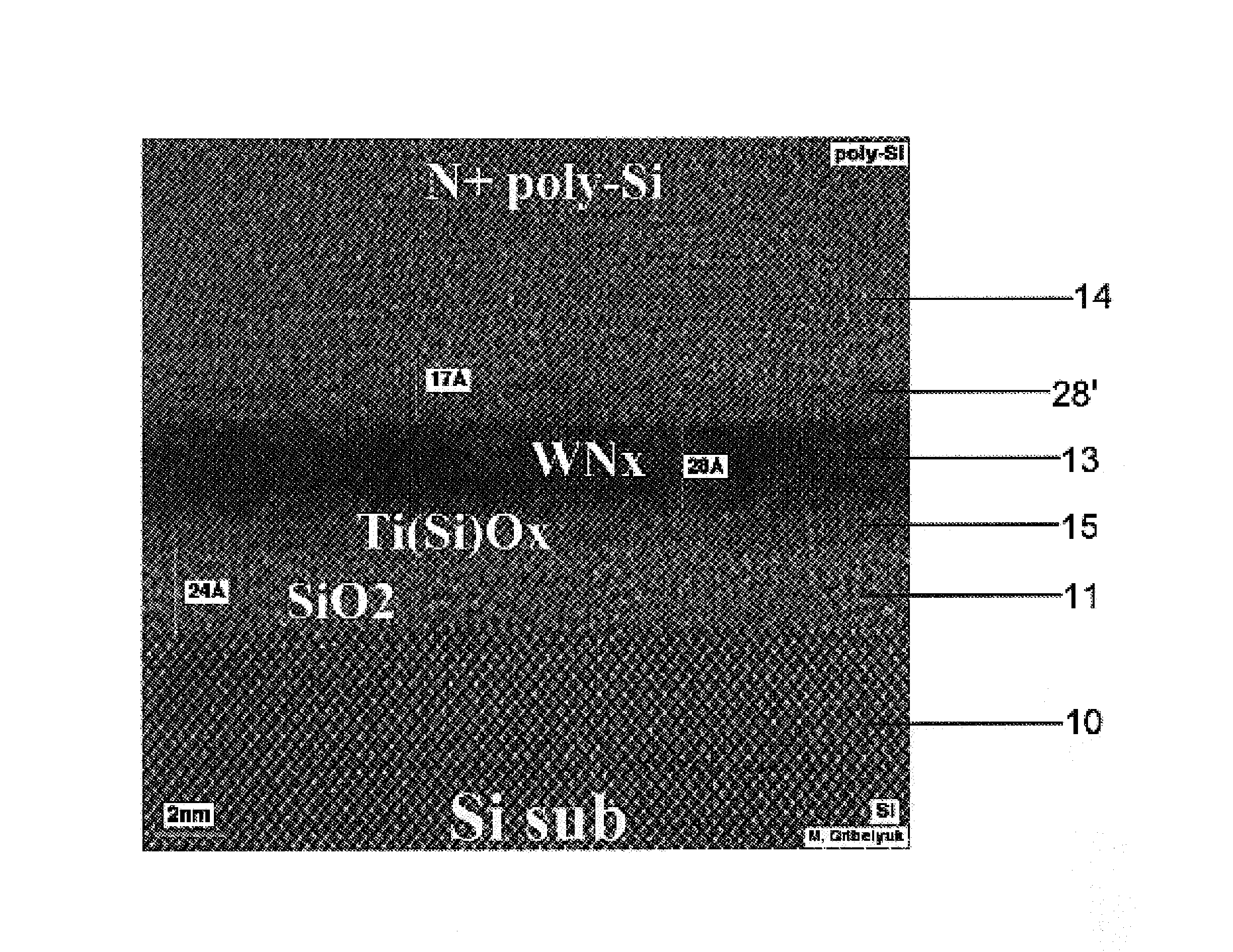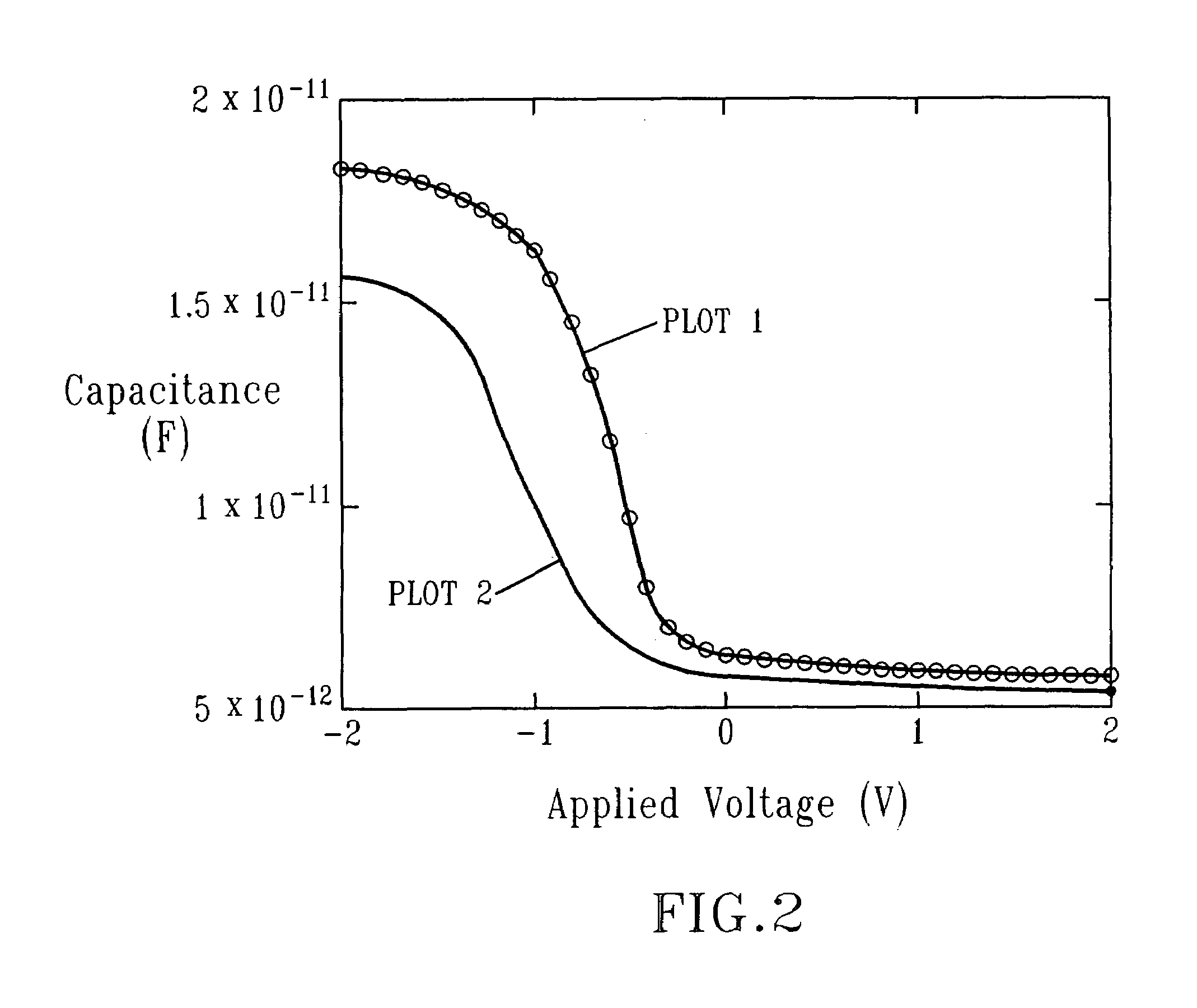High-temperature stable gate structure with metallic electrode
a gate structure and high-temperature stable technology, applied in the direction of basic electric elements, electrical equipment, semiconductor devices, etc., can solve the problems of physical vapor deposition methods falling into disfavor, prior forming methods have been unsuccessful in providing uniform, continuous and uniform ultra-thin high-k gate dielectric layers
- Summary
- Abstract
- Description
- Claims
- Application Information
AI Technical Summary
Benefits of technology
Problems solved by technology
Method used
Image
Examples
Embodiment Construction
[0039]The present invention provides high-k gate dielectrics comprising uniform continuous ultra-thin high-k metal oxide layers, and a method of forming the same. The present invention advantageously provides a continuous ultra-thin high-k metal oxide layer by depositing a highly reactive layer of metal atoms atop a dielectric surface comprising at least silicon and oxygen atoms and forming an oxygen diffusion barrier atop the layer of metal atoms, in which the highly reactive layer of metal atoms and the oxygen diffusion barrier are formed in a non-oxidizing atmosphere. Following the deposition of a gate conductor atop the oxygen diffusion barrier, the highly reactive metal atom layer completely reacts with the dielectric surface to provide a continuous ultra-thin high-k metal oxide layer during subsequent annealing. Specifically, the metal atoms of the layer of metal atoms bonds with the oxygen atoms of the dielectric layer, thus converting the upper surface of the dielectric laye...
PUM
| Property | Measurement | Unit |
|---|---|---|
| dielectric constant | aaaaa | aaaaa |
| threshold voltage | aaaaa | aaaaa |
| temperature | aaaaa | aaaaa |
Abstract
Description
Claims
Application Information
 Login to View More
Login to View More - R&D
- Intellectual Property
- Life Sciences
- Materials
- Tech Scout
- Unparalleled Data Quality
- Higher Quality Content
- 60% Fewer Hallucinations
Browse by: Latest US Patents, China's latest patents, Technical Efficacy Thesaurus, Application Domain, Technology Topic, Popular Technical Reports.
© 2025 PatSnap. All rights reserved.Legal|Privacy policy|Modern Slavery Act Transparency Statement|Sitemap|About US| Contact US: help@patsnap.com



